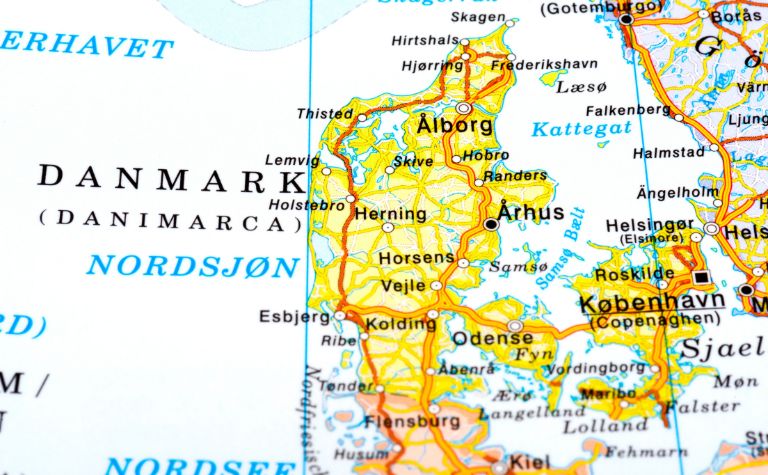Remarkable discoveries of Bronze Age remains give us a window into the past, allowing us to retrace trade routes, understand the skills and crafts of the period, and get a better understanding of religion and culture.
In the case of the Egtved girl, a bronze-age woman discovered in Denmark, this claim could not be more accurate.
The Egtved girl is the remains of a Bronze Age woman found in Denmark. These remains, dating to 1370 BC, consist of parts of the girl’s hair, teeth, fingernails, and brain, as well as her clothing, grave items, and the remains of a child. She was likely a bride from a region other than Denmark.
The Egtved girl’s appearance, clothing, grave goods, and origin have changed how many people look at the past, forcing historians and archaeologists to reconsider travel and mobility, trade, marriage, and religion in Bronze Age Denmark.
Also, see Why Are There No Mountains in Denmark? to learn more.

What Did the Egtved Girl Look Like?
The Egtved girl looked like a fair and petite young woman. She was a short, slender woman aged 16 to 18, with blonde hair and fair skin.
She was approximately 5 feet, 2 inches tall (1.57 m) tall and wore jewelry, a woolen corded skirt, a wool woven shirt, and a woolen belt with a large bronze disk.
The Egtved girl is of high archaeological importance, as her clothing and grave goods have provided much information about Danish culture in the Bronze Age.
The Egtved Girl’s Physical Appearance
Although the Egtved girl’s skin and bones decomposed, most of her hair remains.
She had long, blonde hair with a shorter “bob” or “curtain bang” cut at the front. A simple woolen string held this hair in a low ponytail.
Based on the impression that her body was left in her coffin and the placement of her grave goods, we can surmise that she was just over 5 feet (1.5 m) tall and rather slender. [1]
The Egtved Girl’s Skirt
While the existing remains of the Egtved girl were a fantastic discovery for historians and archaeologists, the girl’s well-preserved clothing was a genuinely monumental find.
The Egtved girl’s skirt challenged many historians’ ideas of women’s dress in the Bronze Age and implied several things about trade, marriage, religion, and modesty.
The remarkable skirt from this find consists of a traditionally woven band, where the weft threads were twisted into ropes, then incorporated into a bottom band.
Based on the girl’s height and the skirt’s length, it would have fallen above the knee.
The loose hanging rope cords that hung over the Egtved girl’s body were not woven together between the waistband and bottom of the skirt, providing little modesty when the young woman moved.
Remnants of similar skirts are not unknown among archaeologists, and many of these finds indicate that there were often bronze beads along these cords that jingled when a woman moved.
Some scholars, such as Thomsen, writing in the 1920s, interpreted this skirt as a ritual item worn by priestesses who participated in “erotic ceremonies.” [2]
Other suppositions about this skirt include that it was likely a typical summer-style skirt for young women, that the dress indicated whether a woman was married or unwed, or that women wore it for ritualistic dances dedicated to the sun during the summertime. [3]

The Egtved Girl’s Belt
The large bronze circular belt plate found with the Egtved girl has distinct ties with the solar-centric religious beliefs of Bronze Age Denmark.
This belt buckle includes a spiral design, which many historians and archaeologists have connected with the Bronze Age worship of the sun’s spiraling path. [4]
Similar images are familiar in rock art and other metal artifacts from the period.
This belt plate further strengthens the theory that the Egtved girl was an elite participant in a ritual dedicated to the sun.
However, ties between sun worship and fertility might also imply that her garments were related to a recent marriage in which she was expected to bear children.
Other Grave Goods Found With the Egtved Girl
Aside from her clothing, the Egtved girl had many grave goods.
Interestingly, one of the most important of these goods was a single yarrow flower, which indicated that she was laid to rest in the summertime.
She wore bronze bangles, was found with one earring, had light woven foot wraps, and had a horn comb dangling from her belt.
She was laid to rest atop a cow’s hide in her oak log coffin, then wrapped with a woolen blanket.
A basket with her personal effects was laid beside her head.
This vessel contained an awl, a hairnet, some wool, moss, and a leaf. Inside this basket, archaeologists also found some cremated bones.
However, there were more bones near the woman’s feet. These cremated remains were from a male child between 5 and 6 years old.
No one knows precisely how the girl and boy were related.
Theories include that he was a sacrifice, her brother, or a boy from her hometown who came to Denmark with her following a marriage.
On the other side of the feet was a birch basket with traces of an alcoholic beverage made with berries, wheat, pollen, and bog myrtle. [5]
This alcoholic beverage is only one part of the history of alcohol in Scandinavia.
Also, see Why Do Danes Celebrate Christmas on December 24th? to learn more.

Where Did the Egtved Girl Come From?
No one knows precisely where the Egtved girl came from. However, strontium isotope analysis of the Egtved girl’s woolen clothing and her teeth indicated that she was from the Black Forest region in Germany.
She may have been a traveler or bride from another European area.
Strontium is a critical element used in archaeological dating processes. Strontium values in our bones and teeth change depending on what we consume.
Every geographical location has a varying amount of strontium in the soil. Thus, with analysis, we can identify the regions where a deceased person ate or drank before they died.
The strontium analysis of the Egtved girl’s teeth indicated that she had traveled at least nine months before she died and was not Scandinavian.
A test of the wool from which her clothes were made also indicated that the fibers were not Scandinavian. [6]
These results indicated that the Egtved girl had traveled on a journey spanning between 497 to 621 miles (800 to 1,000 km) before she died.
The analysts concluded that she was likely from the Black Forest region of Germany, where the soil’s strontium levels were the most similar to the test results.
Historians quickly hypothesized that the Egtved girl had recently married a man from Denmark, following the tradition of intertribal marriage among elites.
This hypothesis also explained the remains of the young boy, who would have come to Denmark with the girl as part of a tradition of exchanging a young man between tribes following a marriage.
However, this conclusion is not set in stone. Analysts still argue about the origin of the Egtved girl.
Still, it seems clear that she was not born in Denmark, and she had traveled from her homeland, wherever it was, at least several months before she died.
Also, see How Much Does It Cost to Live in Denmark? to learn more.
References:
[1] Source
[2] Source
[3] Source
[4] Source
[5] Source
[6] Source
